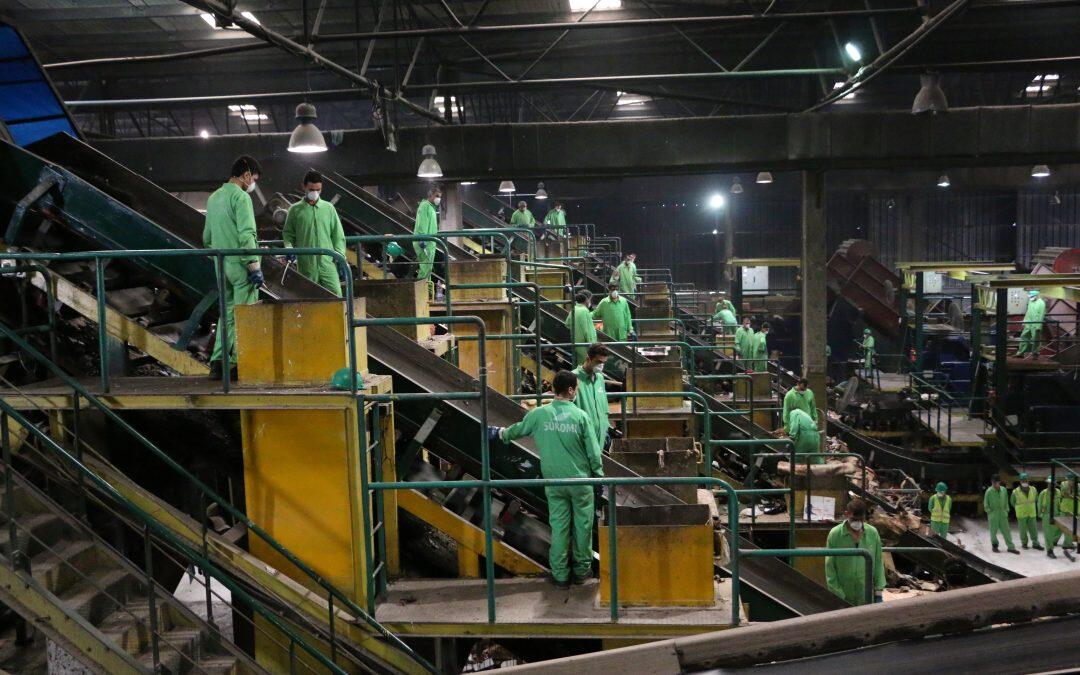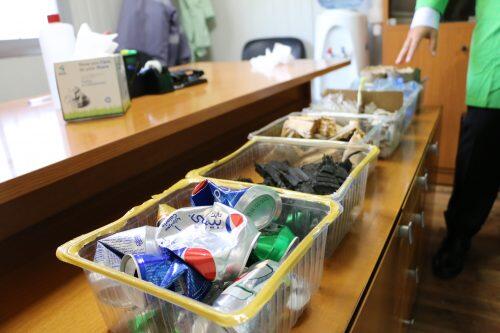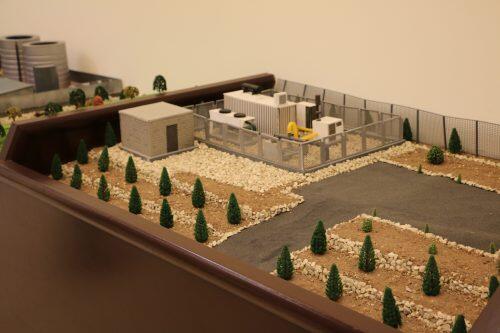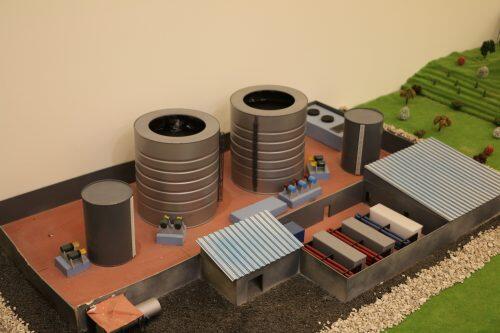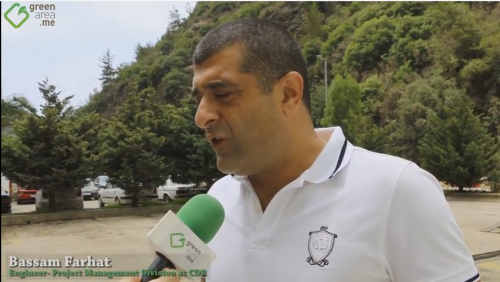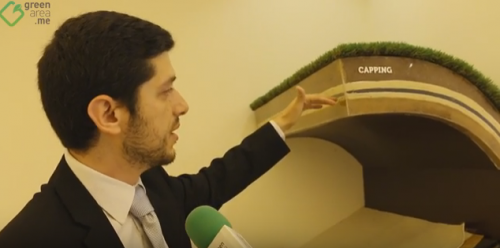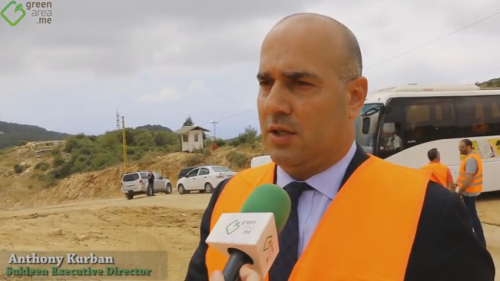After about a year since the garbage crisis in Lebanon, “Sukleen” and “Sukomi” organized a tour for the media on Thursday the 16th of June 2016, inside the company’s sorting, treatment, and landfilling facilities.
The tour began at the sorting plant in Karantina, where the director of the plant explained in detail the mechanism of action.
What is striking is the presence of large quantities of organic wastes, which would have solved a large part of our crisis if they were used for natural fertilizers instead of throwing them.
After that, we went to the “Green site” in Bourj Hammoud, where we were informed about the ways the solid materials are re-used.
The composting and fermentation plant in Bourj Hammoud, receives organic wastes which were sorted in the Quarantina and Bourj Hammoud plants.
The final stop, was in the landfill, which has been the “talk of the town” over the past period, and led to many protests.
Naameh Landfill, now closed, with pipes where emitted methane gas is generated by 0.5 megawatts for 3 nearby towns.
We asked officials in “Sukomi” about their views on the protests especially since the people of the neighboring towns complain of damage.
Naameh Landfill Director Abd Al-Rahman Traboulsi said in an interview with “greenarea.info”: “We built this landfill according to international standards, so we are very sure about what we are doing and what we are applying on site,” adding “we are sure that nothing is polluting the surrounding.”
The site manager also explained the details of the sanitary land-filling process, and then we went to inspect the landfill and the nearby power plant, which provides 0.5 megawatts of electricity for 3 nearby villages, from the methane gas emitted from the landfill. The company aims to provide 7 megawatts by the end of the year.
Traboulsi explained that “Naameh landfill consists of 5 main systems, saying that the Containment System aims at containing the leachate inside the cell.
This system consists of 6 main layers:
- Geosynthetic clay liner (GCL Membrane): Traboulsi said that “this membrane is like putting one meter of clay beneath the main protection layer, which is the HTPE geomembrane.
- The last layer is basalt stone layer, which is placed to collect all the leachate at the bottom at the cells (gas is collected by gas wells to generate 0.5 kw of electricity on site, which is supposed to be 7 megawatts by the end of this year.
- The fourth system is the environmental monitoring, which includes ensuring that there is no leakage by the double protective layer on site.
We asked the Naameh landfill director if the experts responsible for the environmental monitoring belong to “Sukomi” and “Sukleen”, or to “CDR”. He responded that “We have environmental experts, and the Ministry of Environment sends experts to check on what we are doing,” adding that “there are on site experts”.
Back to the last system, which is the capping system (which also consists of multiple layers:
- Plastic Layer
- Geocomposite drainage layer
- Soil materials
At the end, this system is finalized by planting a layer of green grass.
What are the works being done in the landfill after closing it? And what will it be transformed into?
“Sukleen” executive director Anthony Korban said in an interview with “greenarea.info”: “Since 2014, we took the initiative to bring a special gas generator, to transform the gas in the landfill to electricity,” adding that “this started by the Naameh site itself, where the company was providing electricity 24/7, to reduce the environmental impact on the surrounding.”
He also said that “Since the summer of 2014, we started providing electricity for more than 500 houses, in the 3 towns surrounding the landfill, which are Baawirta, Ain Drafil, and Abay.”
According to Korban: “from now until the end of the year, in November, we will be done with increasing the capacity produced, from 0.5 megawatts to 7 megawatts,” adding “this will enable us to provide free electricity 24/7, for more than 5,000 houses.”
We also interviewed Bassam Farhat, an Engineer at the Project Management Division at CDR, asking him about the results of reports presented by the experts, specifically regarding the environmental impact of the landfill.
Farhat replied that “there are consultants on the collection and sweeping, collecting plants, and landfilling,” adding that “they submit monthly reports regarding the progress that has been going on these sites.”
He also explained that “the reports are submitted regularly to the Ministry of Environment and the Ministry of Interior Affairs.”

